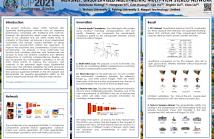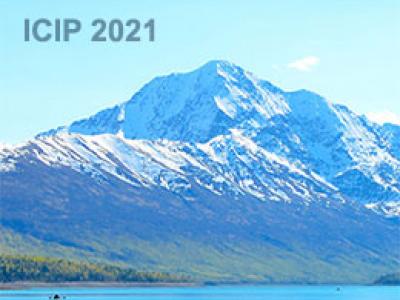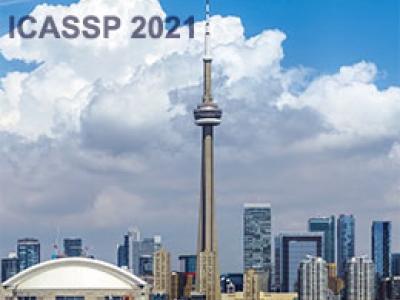- Image/Video Storage, Retrieval
- Image/Video Processing
- Image/Video Coding
- Image Scanning, Display, and Printing
- Image Formation

- Read more about M3VSNet: Unsupervised Multi-metric Multi-view Stereo Network
- Log in to post comments
The present Multi-view stereo (MVS) methods with supervised learning-based networks have an impressive performance comparing with traditional MVS methods. However, the ground-truth depth maps for training are hard to be obtained and are within limited kinds of scenarios. In this paper, we propose a novel unsupervised multi-metric MVS network, named M^3VSNet, for dense point cloud reconstruction without any supervision.
slide1091.pdf
- Categories:
 70 Views
70 Views
- Read more about SOLVING FOURIER PHASE RETRIEVAL WITH A REFERENCE IMAGE AS A SEQUENCE OF LINEAR INVERSE PROBLEMS
- Log in to post comments
- Categories:
 18 Views
18 Views
- Read more about Adversarial Unsupervised Video Summarization Augmented with Dictionary Loss
- Log in to post comments
Automated unsupervised video summarization by key-frame extraction consists in identifying representative video frames, best abridging a complete input sequence, and temporally ordering them to form a video summary, without relying on manually constructed ground-truth key-frame sets. State-of-the-art unsupervised deep neural approaches consider the desired summary to be a subset of the original sequence, composed of video frames that are sufficient to visually reconstruct the entire input.
- Categories:
 28 Views
28 Views
- Read more about INTEGRATED GRAD-CAM: SENSITIVITY-AWARE VISUAL EXPLANATION OF DEEP CONVOLUTIONAL NETWORKS VIA INTEGRATED GRADIENT-BASED SCORING
- Log in to post comments
Visualizing the features captured by Convolutional Neural Networks (CNNs) is one of the conventional approaches to interpret the predictions made by these models in numerous image recognition applications. Grad-CAM is a popular solution that provides such a visualization by combining the activation maps obtained from the model.However, the average gradient-based terms deployed in this method under-estimates the contribution of the representations discovered by the model to its predictions.
- Categories:
 13 Views
13 Views
- Read more about ADA-SISE: ADAPTIVE SEMANTIC INPUT SAMPLING FOR EFFICIENT EXPLANATION OF CONVOLUTIONAL NEURAL NETWORKS
- Log in to post comments
Explainable AI (XAI) is an active research area to interpret a neural network’s decision by ensuring transparency and trust in the task-specified learned models.Recently,perturbation-based model analysis has shown better interpretation, but back-propagation techniques are still prevailing because of their computational efficiency. In this work, we combine both approaches as a hybrid visual explanation algorithm and propose an efficient interpretation method for convolutional neural networks.
- Categories:
 10 Views
10 Views
- Categories:
 6 Views
6 Views
- Read more about MULTI-GRANULARITY FEATURE INTERACTION AND RELATION REASONING FOR 3D DENSE ALIGNMENT AND FACE RECONSTRUCTION
- Log in to post comments
In this paper, we propose a multi-granularity feature interaction and relation reasoning network (MFIRRN) which can recover a detail-rich 3D face and perform more accurate dense alignment in an unconstrained environment. Traditional 3DMM-based methods directly regress parameters, resulting in the lack of fine-grained details in the reconstruction 3D face. To this end, we use different branches to capture discriminative features at different granularities, especially local features at medium and fine granularities.
- Categories:
 20 Views
20 Views
- Read more about MULTI-GRANULARITY FEATURE INTERACTION AND RELATION REASONING FOR 3D DENSE ALIGNMENT AND FACE RECONSTRUCTION
- Log in to post comments
In this paper, we propose a multi-granularity feature interaction and relation reasoning network (MFIRRN) which can recover a detail-rich 3D face and perform more accurate dense alignment in an unconstrained environment. Traditional 3DMM-based methods directly regress parameters, resulting in the lack of fine-grained details in the reconstruction 3D face. To this end, we use different branches to capture discriminative features at different granularities, especially local features at medium and fine granularities.
- Categories:
 14 Views
14 Views
- Read more about PROGRESSIVE MULTI-STAGE FEATURE MIX FOR PERSON RE-IDENTIFICATION
- 1 comment
- Log in to post comments
slides.pdf
- Categories:
 21 Views
21 Views
- Read more about AGGREGATION ARCHITECTURE AND ALL-TO-ONE NETWORK FOR REAL-TIME SEMANTIC SEGMENTATION
- Log in to post comments
Poster%231683.pdf
- Categories:
 6 Views
6 Views